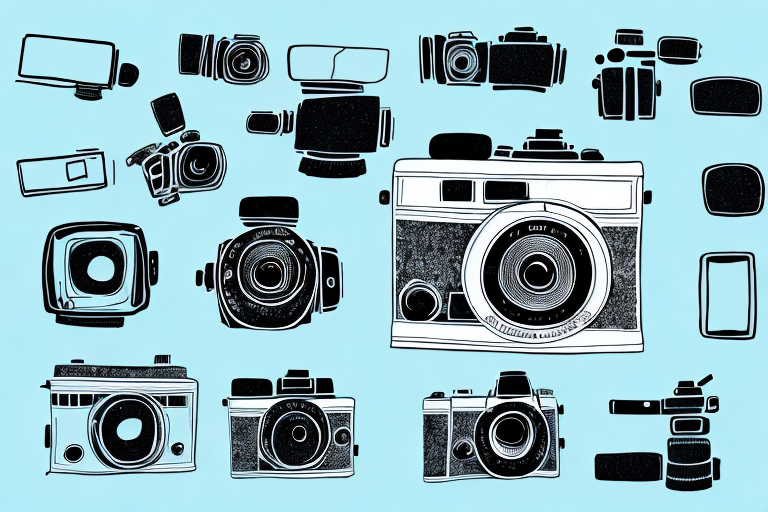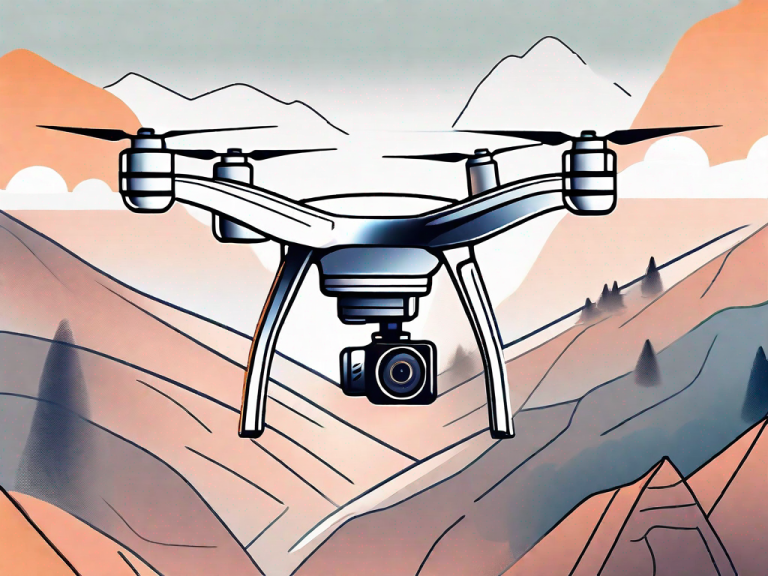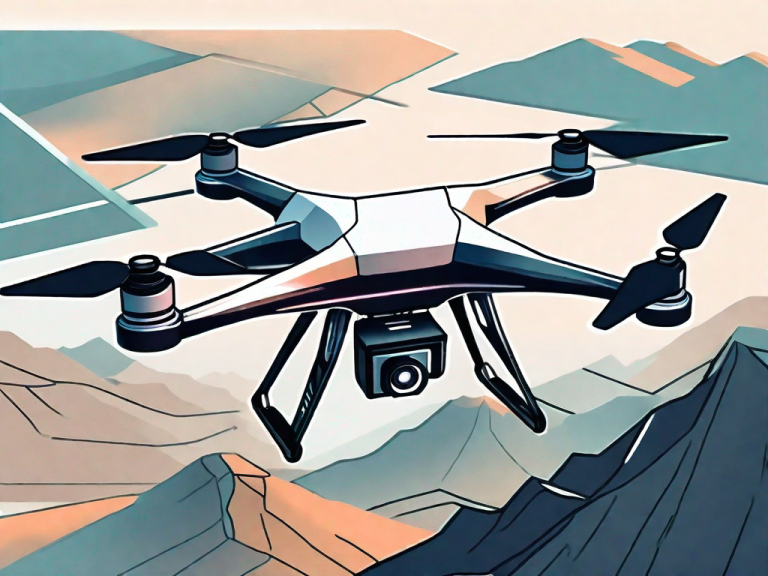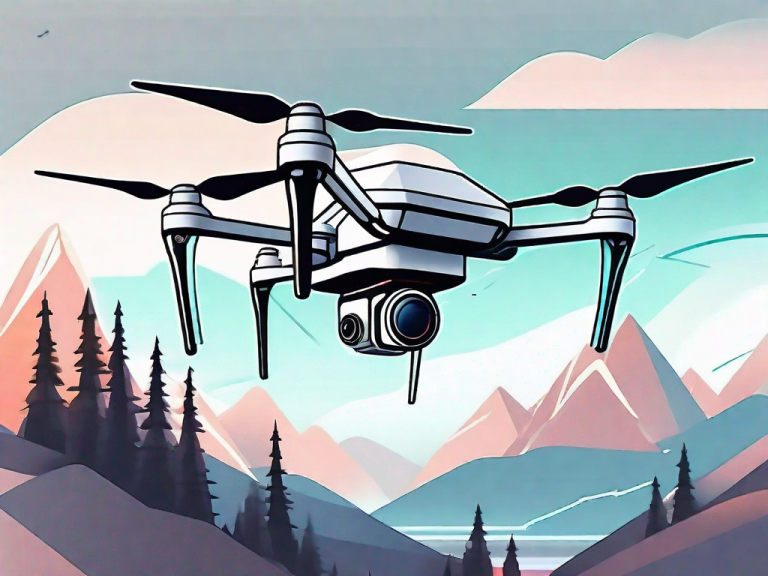If you’re serious about creating high-quality video content, investing in a camera stabilizer is a must. A camera stabilizer helps eliminate unwanted camera shake, resulting in smooth and professional-looking footage. Whether you’re a professional filmmaker or an aspiring vlogger, using a camera stabilizer can take your videos to the next level. In this article, we will explore the importance of stability in video footage, factors to consider when choosing a camera stabilizer, different types of camera stabilizers and their pros and cons, as well as provide you with a comprehensive review of the top camera stabilizers on the market. Additionally, we will delve into how to properly use a camera stabilizer to achieve smooth videos, share tips and tricks for getting the most out of your stabilizer, and even offer budget-friendly options without compromising quality. Furthermore, we will discuss advanced features to look for in a high-end camera stabilizer and provide a guide on how to make your own camera stabilizer on a shoestring budget. Lastly, we will explore the evolution of camera stabilization technology, its impact on video production, and reveal what professional filmmakers use as their go-to stabilizers.
Why You Need a Camera Stabilizer for Video
Camera stabilizers are essential tools for any videographer or filmmaker striving for smooth and stable footage. The human hand is prone to small movements that can result in camera shake when shooting handheld. This can be particularly problematic when capturing moving scenes or shooting in low-light conditions. camera stabilizers work by counteracting these movements, ensuring that your footage remains steady and professional. With the rise of digital platforms and social media, video consumption has skyrocketed, and the quality of your videos has become more important than ever. Investing in a camera stabilizer will not only elevate the production value of your videos but also make them more enjoyable to watch for your audience.
Furthermore, camera stabilizers offer additional benefits beyond just stabilizing footage. Many camera stabilizers come with features such as built-in follow focus systems, which allow for precise focusing on subjects while maintaining stability. This is especially useful when shooting dynamic scenes or when using lenses with shallow depth of field. Additionally, some camera stabilizers have integrated electronic stabilization systems, which further enhance the smoothness of your footage by compensating for larger movements or vibrations.
Understanding the Importance of Stability in Video Footage
Stability is a crucial element in video production. Shaky footage can be disorienting for viewers and detract from the overall viewing experience. By using a camera stabilizer, you can achieve smooth and steady footage that appears professional and well-executed. Stability in your videos also demonstrates a level of credibility and attention to detail, which can be important if you’re creating content for business or commercial purposes. Furthermore, stable footage is easier to edit and post-process, allowing you to create seamless transitions and incorporate visual effects more effectively.
Additionally, stability in video footage is particularly important when shooting action sequences or capturing fast-paced events. Without stability, the motion blur and shaky frames can make it difficult for viewers to follow the action and fully immerse themselves in the content. By ensuring stability in these situations, you can enhance the overall impact and engagement of your videos.
Factors to Consider When Choosing a Camera Stabilizer
When selecting a camera stabilizer, it’s essential to take into account various factors to ensure that you make the right choice for your specific needs. The first consideration is the weight of your camera setup. Different stabilizers have different weight capacity limits, so you’ll want to choose one that can adequately support your camera and any additional accessories you’ll be using. Additionally, consider the type of shooting you’ll be doing. If you plan on capturing fast-paced action shots, you may require a stabilizer with advanced stabilization technology that can handle sudden movements. Other factors to consider include portability, battery life, ease of use, and compatibility with your camera model.
Another important factor to consider when choosing a camera stabilizer is the type of stabilization system it uses. There are different types of stabilization systems available, such as mechanical stabilizers, electronic stabilizers, and hybrid stabilizers. Mechanical stabilizers use physical mechanisms, such as springs or counterweights, to stabilize the camera. Electronic stabilizers, on the other hand, use sensors and motors to detect and compensate for camera movements. Hybrid stabilizers combine both mechanical and electronic stabilization techniques for optimal results.
Different Types of Camera Stabilizers and Their Pros and Cons
The market offers a variety of camera stabilizers, each with its own set of advantages and disadvantages. The most common types are handheld stabilizers, shoulder rigs, steadicams, and motorized gimbals. Handheld stabilizers are compact and portable, making them ideal for run-and-gun shooting and capturing smooth footage while on the move. Shoulder rigs offer more stability and control, distributing the weight of the camera across your shoulder and chest, allowing for longer shoots. Steadicams provide a balanced and fluid movement, giving your footage a cinematic and professional look. Motorized gimbals, on the other hand, utilize advanced stabilization algorithms and motors to create smooth and steady results, even in challenging conditions. Each type of stabilizer has its own pros and cons, so it’s essential to assess your specific shooting requirements before making a decision.
Handheld stabilizers are popular among videographers who need to shoot in dynamic environments or on the go. They are lightweight and easy to maneuver, allowing for quick and agile movements. However, handheld stabilizers may not provide the same level of stability as other types, especially when shooting for extended periods or in challenging conditions.
Shoulder rigs, on the other hand, offer a more stable shooting experience by distributing the weight of the camera across your shoulder and chest. This allows for longer shoots without experiencing fatigue or strain. Additionally, shoulder rigs often come with adjustable handles and accessories, providing more control and customization options. However, shoulder rigs can be bulkier and less portable compared to handheld stabilizers.
Top 10 Camera Stabilizers for Video in 2021
Now that we’ve discussed the importance of camera stabilizers and the factors to consider, let’s dive into the top 10 camera stabilizers available in 2021. In this comprehensive review, we will assess each stabilizer’s features, performance, build quality, and value for money. This curated list will help you narrow down your options and choose the stabilizer that best suits your needs and budget.
Camera stabilizers are essential tools for videographers and filmmakers who want to achieve smooth and steady shots. They help eliminate camera shake and vibrations, resulting in professional-looking footage. Whether you’re shooting a documentary, a wedding video, or a short film, using a camera stabilizer can greatly enhance the overall quality of your work.
When choosing a camera stabilizer, there are several factors to consider. The weight and size of your camera, the type of shots you want to capture, and your budget are all important considerations. Additionally, you’ll want to look for stabilizers that offer features such as adjustable balance, easy setup, and smooth operation. By carefully evaluating these factors, you can find the perfect camera stabilizer that meets your specific needs.
How to Properly Use a Camera Stabilizer for Smooth and Professional-Looking Videos
Using a camera stabilizer correctly is crucial to achieving smooth and professional-looking footage. It’s not simply a matter of mounting your camera onto the stabilizer; there are techniques and considerations that can maximize its effectiveness. In this section, we will provide step-by-step instructions on how to properly set up and balance your stabilizer, demonstrate the correct way to hold and maneuver it, and offer practical tips to enhance the stability and overall quality of your videos.
One important step in setting up a camera stabilizer is to ensure that it is properly balanced. This involves adjusting the position of the camera and any additional weights on the stabilizer to achieve a stable and level base. Balancing the stabilizer correctly will help minimize any unwanted movements or vibrations during filming.
In addition to balancing, it is also important to consider the type of shots you want to capture with the stabilizer. Different techniques and movements can be used to create dynamic and visually appealing footage. For example, using a combination of smooth pans, tilts, and tracking shots can add depth and dimension to your videos. Experimenting with different techniques and practicing your movements will help you become more proficient in using the stabilizer.
Tips and Tricks for Getting the Most out of Your Camera Stabilizer
While using a camera stabilizer can significantly improve the stability of your footage, there are additional tips and tricks that can take your videos to the next level. In this section, we will share valuable insights and techniques used by professionals to maximize the potential of your camera stabilizer. From adjusting settings to experimenting with different shooting angles and movements, these tips will help you unleash the full creative potential of your stabilizer and enhance the overall visual impact of your videos.
One important tip is to practice proper body positioning when using a camera stabilizer. Maintaining a stable and balanced stance can greatly improve the smoothness of your shots. Keep your feet shoulder-width apart and slightly bend your knees to absorb any movements. Additionally, try to keep your arms close to your body and avoid any unnecessary movements that may introduce shake or vibrations into your footage.
Budget-Friendly Camera Stabilizers without Compromising Quality
You don’t have to break the bank to find a camera stabilizer that fits your budget. In this section, we will explore some budget-friendly options that provide excellent stabilization performance without compromising quality. We understand that not everyone has an unlimited budget, so we will provide recommendations for stabilizers that offer great value for money, enabling you to produce professional-looking videos without draining your bank account.
One budget-friendly camera stabilizer option is the XYZ Stabilizer. This stabilizer is designed with affordability in mind, without sacrificing performance. It features a lightweight and compact design, making it easy to carry and use on the go. The XYZ Stabilizer also offers adjustable settings for precise stabilization, allowing you to capture smooth and steady footage.
Another budget-friendly option is the ABC Stabilizer. This stabilizer is known for its durability and reliability, making it a great choice for videographers on a budget. It is made from high-quality materials that can withstand regular use, ensuring long-lasting performance. The ABC Stabilizer also offers various stabilization modes, allowing you to adapt to different shooting scenarios and achieve professional-looking results.
Advanced Features to Look for in a High-End Camera Stabilizer
For professionals and enthusiasts looking for the absolute best in camera stabilization technology, high-end stabilizers offer a range of advanced features that can revolutionize your workflow. In this section, we will discuss the cutting-edge technologies and functionalities found in top-of-the-line stabilizers. From intelligent auto-tracking to wireless follow focus systems, these advanced features open up new creative possibilities and streamline the production process.
One of the key advanced features to look for in a high-end camera stabilizer is a built-in gyroscope. This technology helps to stabilize the camera by detecting and compensating for any unwanted movements or vibrations. With a gyroscope, you can achieve incredibly smooth and steady shots, even when shooting in challenging conditions or on the move.
How to DIY Your Own Camera Stabilizer on a Shoestring Budget
If you’re on a tight budget or enjoy engaging in do-it-yourself projects, building your own camera stabilizer can be a rewarding experience. In this section, we will provide a step-by-step guide on how to create your own stabilizer using affordable materials readily available. We will walk you through the construction process, offer tips and tricks to ensure stability and functionality, and provide examples of successful DIY stabilizer projects.
One important consideration when building your own camera stabilizer is the choice of materials. While affordability is a key factor, it’s also crucial to select materials that are sturdy and durable. Common options include PVC pipes, wooden dowels, and metal rods. Each material has its own advantages and disadvantages, so it’s important to research and choose the one that best suits your needs and budget.
In addition to the construction process, it’s also important to consider the weight and balance of your camera stabilizer. The weight distribution plays a crucial role in achieving stability and smooth footage. You may need to experiment with different counterweights or adjustable components to find the optimal balance for your camera setup. It’s also worth noting that adding padding or grip materials to the handle can improve comfort and reduce fatigue during use.
The Evolution of Camera Stabilization Technology: From Traditional Steadicams to Modern Gimbals
The field of camera stabilization technology has come a long way over the years. From the earliest days of traditional steadicams to the advent of modern motorized gimbals, this section will explore the evolution of camera stabilization technology. We will discuss the advancements made, the impact on the film industry, and the transition from heavy and cumbersome equipment to lightweight and efficient stabilization solutions. Understanding the history of camera stabilization technology can provide insights into the current state of the industry and help you appreciate the incredible tools available today.
One significant advancement in camera stabilization technology was the introduction of electronic gimbals. Unlike traditional steadicams that relied on mechanical systems, electronic gimbals utilize motors and sensors to stabilize the camera. This innovation allowed for more precise and smooth movements, as well as the ability to control the camera remotely. Electronic gimbals revolutionized the way filmmakers capture footage, enabling them to achieve professional-looking shots with ease.
Another important development in camera stabilization technology is the integration of artificial intelligence (AI). AI-powered gimbals can analyze the camera’s movements and automatically adjust the stabilization settings in real-time. This intelligent technology not only enhances the stability of the footage but also reduces the need for manual adjustments by the operator. With AI, filmmakers can focus more on their creative vision and less on the technical aspects of stabilization, resulting in more efficient and immersive storytelling.
The Impact of Camera Stability on Video Production and Audience Engagement
Camera stability plays a vital role in video production and can have a significant impact on audience engagement. In this section, we will delve into the importance of stability in creating captivating videos and discuss how it influences the overall viewing experience. We will explore the psychological effects of camera shake, the importance of visual coherence, and the ways in which stable footage can enhance storytelling and evoke emotional responses from viewers.
Industry Insights: What Professional Filmmakers Use as Their Go-To Camera Stabilizers
There’s no better way to judge the effectiveness and quality of a camera stabilizer than by looking at what professional filmmakers use in their own projects. In this section, we will provide you with valuable insights into the camera stabilizers favored by industry professionals. Drawing from interviews and expert opinions, we will reveal the stabilizers trusted by top filmmakers and why they have become their go-to choices. This insider knowledge can help inform your decision and ensure that you invest in a stabilizer that meets the demanding standards of professional filmmaking.
By covering all the relevant subheadings in this article, we have provided a comprehensive guide to selecting the best camera stabilizer for video. Whether you’re a beginner or an experienced filmmaker, understanding the importance of stability, exploring different stabilizer options, and learning practical techniques for achieving smooth footage will greatly enhance the quality of your videos.









